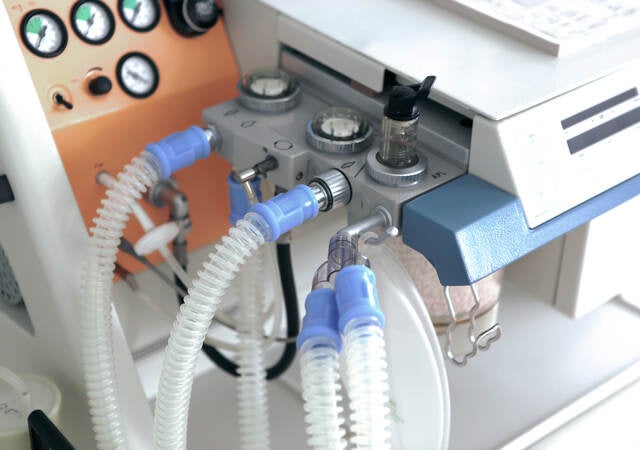January 22, 2024
By Oliver Eikenberg, Ken Pilgrim and Evangeline Loh
The European Commission’s Medical Device Coordinating Group (MDCG) has updated its priorities regarding the In Vitro Diagnostic Medical Devices Regulation (IVDR).
The MDCG updated its Joint implementation and preparedness plan for the IVDR to reflect ongoing progress of its work and to set new priorities for the European Regulation (EU) 2017/746 (IVDR).
IVDR plan organization
The 20-page document provides a legislative update on the current status of the IVDR and continues with prioritization of the required strategic actions and guidance to overcome current challenges and to establish an operational system in the EU. The plan is divided into three sections and an annex.
The first section (I. Introduction) includes the legislative background to the IVDR and summarizes the changes and amendments introduced since the planned transition to the Regulation in 2017. Examples of accomplishments to date are included.
Section two (II. Priority areas and actions) describes the concrete actions that enable contingency planning, as well as those on the vital infrastructure of the EU IVD sector. The priority areas are divided into two sets, Set A and Set B, with Set A categorized as essential actions (short-term priorities), and Set B for actions on legislation and guidance documents which should ease the work of affected stakeholders; A separate focus is given to the designation of EU reference labs for high-risk IVDs.
Section three is a brief conclusion section titled “Beyond May 26, 2022, the IVDR’s date of application.”
The Annex table (Summary of actions) repeats each priority action and shares the timeline and status.
Official commentary and accomplishments to date
The MDCG emphasized the difficulty of the IVDR’s implementation. This includes statements in Section I reflecting that “implementation of the IVDR has proven to be a very challenging task,” and “joint responsibility” of all actors and the need that “all actors involved further step up their efforts and work closely together” to implement this new legislation and meet the “objectives of public health, patient safety and transparency.”
The MDCG extolled its significant achievements including:
- Necessary implementing acts and administrative arrangements enabling the designation of notified bodies have been put in place.
- Twelve notified bodies have been designated as of December 2023 and further applications are being processed.
- The Unique Device Identifier system has been set up.
- The EUDAMED database is under development.
- The IVD expert panel is operating.
- Five EU reference laboratories have been designated.
- A large set of common specifications has been adopted and further specifications are in development.
- Many guidance documents have been published and several have been reviewed since publication.
What are the Set A essential priority actions?
The two areas described for Set A are related to contingency planning and monitoring and notified bodies availability. Each set has three priority actions. Contingency planning and monitoring focuses on the engagement of MDCG and market monitoring on the preparedness of actors to avoid shortages and to support availability of safe and critical IVDs. It further considers the required readiness of the EU IVDR system for a potential urgent response to a health crisis, such as COVID-19. Some of these were defined previously and are just updated and marked as “ongoing.” It is important to understand the balance: to give involved actors more time, flexibility and additional guidance for transitioning to IVDR, but also to make sure that the system is functional in case of a hypothetical new emergency.
Set B contains most of the non-essential priority actions
Set B comprises 10 areas defined as not essential, which means that these actions would facilitate the work of the involved actors but do not limit manufacturers from placing their devices on the EU market:
- EU Reference Labs (EURL)
- Common Specifications (CS)
- Guidance for notified bodies
- Performance evaluation and expert panels
- Standards
- Companion diagnostics
- In-house devices
- Legacy devices
- EUDAMED
- Orphan devices
All Priority Actions for CS, Companion diagnostics, in-house devices, legacy devices, standards and EUDAMED have been marked as completed. Other areas have been completed for most actions and only a few priority actions are still ongoing. This demonstrates the significant work the MDCG has done to fulfill the set priority actions and build the basis for a robust, innovative and up-to-date EU framework, including pointing to the released MDCG guidance documents. These are a valuable source for manufacturers or other stakeholders to verify that they are keeping pace with the current state-of-the-art interpretations.
Concluding remarks
The Updates to Joint Implementation Plan is a valuable summary to understand both completed and ongoing MDCG priority actions. The annex summarizes the actions and is the most useful reference in the document for an overview. However, all actors should read the entire document and understand the changes and the current context of prioritization by MDCG (e.g., readiness of the system in case of a potential health crisis).
Most of the priority actions within the responsibility of the MDCG are marked as completed, but this does not mean that all problems are solved and that new priorities cannot be started. Other ongoing actions are expected to be updated over time. However, it reflects the position of the MDCG that there are no significant essential short-term priorities that could hinder IVD manufacturers from placing their devices on the market or present obstacles for the notified body controlling them.
Request more information from our specialists
Thanks for your interest in our products and services. Let's collect some information so we can connect you with the right person.







